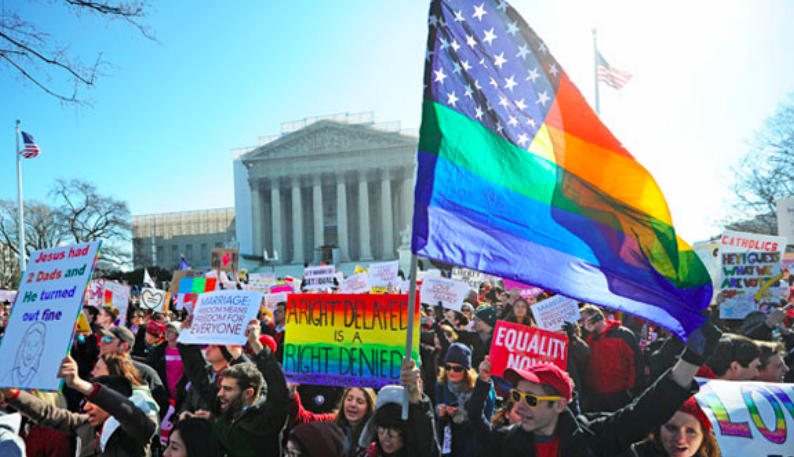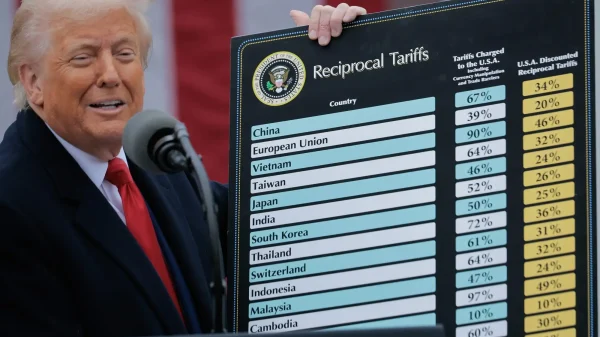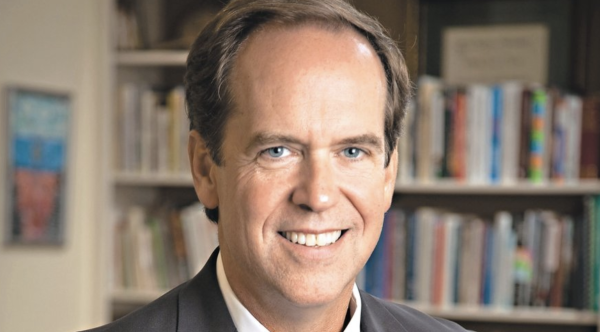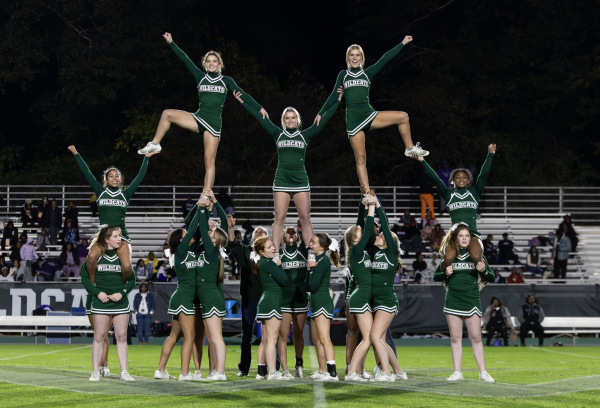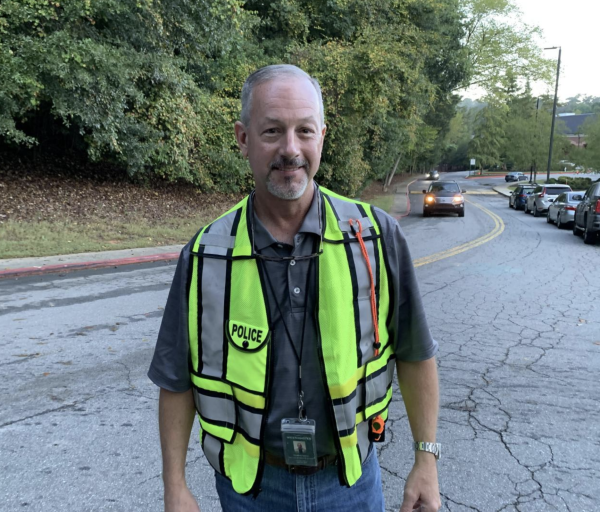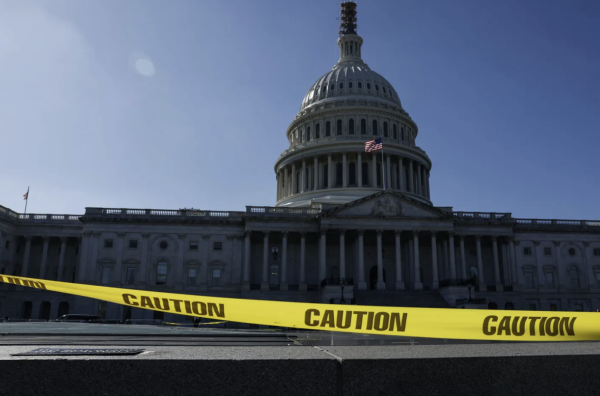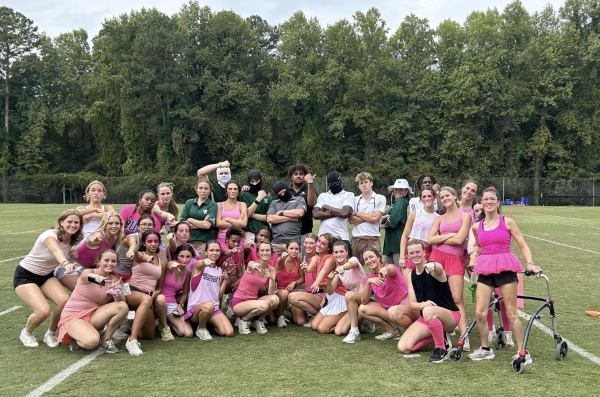Same Sex Marriage is Here To Stay
Kim Davis, county clerk for Rowan County, Kentucky, returned to work on Monday, September 14 after a five day stay in jail for refusing to recognize a court mandate to provide marriage licenses to same-sex couples. Surrounded by national media, Davis’ defiant attitude continued to show no signs of relenting. Although Davis’ actions may seem extreme, they are symptomatic of a country divided on a recent Supreme Court ruling legalizing same-sex marriage. However, American opinions are changing. In a 2001 Pew Research poll, Americans opposed same-sex marriage by a 57% to 35% margin, while in the 2015 poll by the same research company, the numbers have reversed with 55% supporting same-sex marriage and 39% in opposition.
On June 26 2015, in a monumental 5-4-vote decision, the Supreme Court ruled that same-sex-couples would have the right to marry in all 50 states. The U.S. is officially the 21st country to nationally legalize same-sex-marriage. This entire eventful journey began with 14 same-sex couples, along with two couples whose partners are deceased, winning their local court trials against the state officials who enforced laws against gay marriage in Kentucky, Michigan, Ohio, and Tennessee, which happen to be a few of the many states that define marriage as a union between one man and one woman. While some states, like Kentucky, still oppose same-sex marriage, they are all complying with federal law.
“No union is more profound than marriage, for it embodies the highest ideals of love, fidelity, devotion, sacrifice and family,” Supreme Court Justice Anthony Kennedy said in the Supreme Court decision. “In forming a marital union, two people become something greater than they once were.”
Prior to the June 25, 2015 Supreme Court decision, a total of 37 states allowed legal same-sex marriage, while 13 had same-sex marriage bans, including Georgia. In eight of these thirteen states, gay marriage bans had been overturned but were in the process of appeals prior to the Supreme Court ruling.
The United States has reached its current point in legislature on same-sex marriage through many years of changing laws and legal and religious compromises. The issue of same-sex marriage first surfaced in January of 1973 when Maryland became the first state to legally ban marriage between same-sex couples. In September of 1996 President Bill Clinton delivered a blow to same-sex marriage advocates by signing the Defense of Marriage. This mandated that married, same sex-couples would receive less rights and benefits. In September of 1999, California became the first domestic partnership state, giving limited rights to same-sex couples. In May of 2012, same-sex marriage efforts received a boost when President Obama became the first U.S. President to publicly proclaim his support for same-sex marriage. Fast-forward to May of 2014, when Massachusetts became the first state to grant same-sex couples the ability to marry. Here at Westminster we are fortunate enough to have among us someone who has been personally affected by the Supreme Court ruling in favor of gay marriage, our upper school Spanish and French teacher, Jason Smith.
“My definition of marriage would be two people who love each other, who want to share a life with each other, who share responsibility for every day things, and who compromise on life’s crazy situations sometimes,” Smith says. “I’m 100% for gay marriage. I am gay, and I am married. For me marriage is a civil responsibility. In the past it did have something to do with the church I think, but nowadays it’s not the same way. So I am 100% for it and was glad when it passed.”
This is the consensus among most of those interviewed, including Reverend Bailey.
“My definition of marriage is really basic,” said Bailey. “It’s the union of two people, who are willing to step out in faith and allow themselves to exercise the gift of love that God has given us.”
Included in the consensus that same-sex marriage should be legal in all states is senior Colesy Cotter whose views stem from her belief in separation of church and state in regards to this issue.
“I think that marriage shouldn’t necessarily be something defined by the church,” Cotter said. “I think marriage can be some sort of legal bond between two people. But I don’t think that it has to be between a man and a woman, or a man and a man.”
Although most of the interviewees shared the same marriage definition, Middle School teacher Kim Blodgett’s opinion differed, as she believes marriage is a religious term.
“I think that marriage is a religious term and that there is a difference between marriage and civil union. There should be a separation between Church and State, so I would define marriage as a union between two human beings together through the Church.”
In general, all those that were interviewed agreed that the legalization of gay marriage is better for society in general.
“I think that it will affect society in a very beneficial way,” Cotter said, the other interviewees in agreement.
Furthermore, students and teachers at Westminster are seemingly in consensus about Kim Davis’ recent imprisonment.
“She broke the law,” said Bailey. “The law clearly said by way of the U.S. Supreme Court that every state was supposed to honor same-sex-marriage. She broke the law and by way of the law she went to jail.”
“There is a separation between Church and State,” Smith said, in agreement with Bailey. “You have a job, for example my job is to teach regardless of ethnicity or where they’re from. That’s my job. I feel like her job was to issue marriage licenses and she didn’t do it.”
Will more Americans continue to migrate towards the support of same-sex marriage? Will this issue continue to divide the country? Only time will tell but one thing is certain: for now, same-sex marriage is here to stay.
